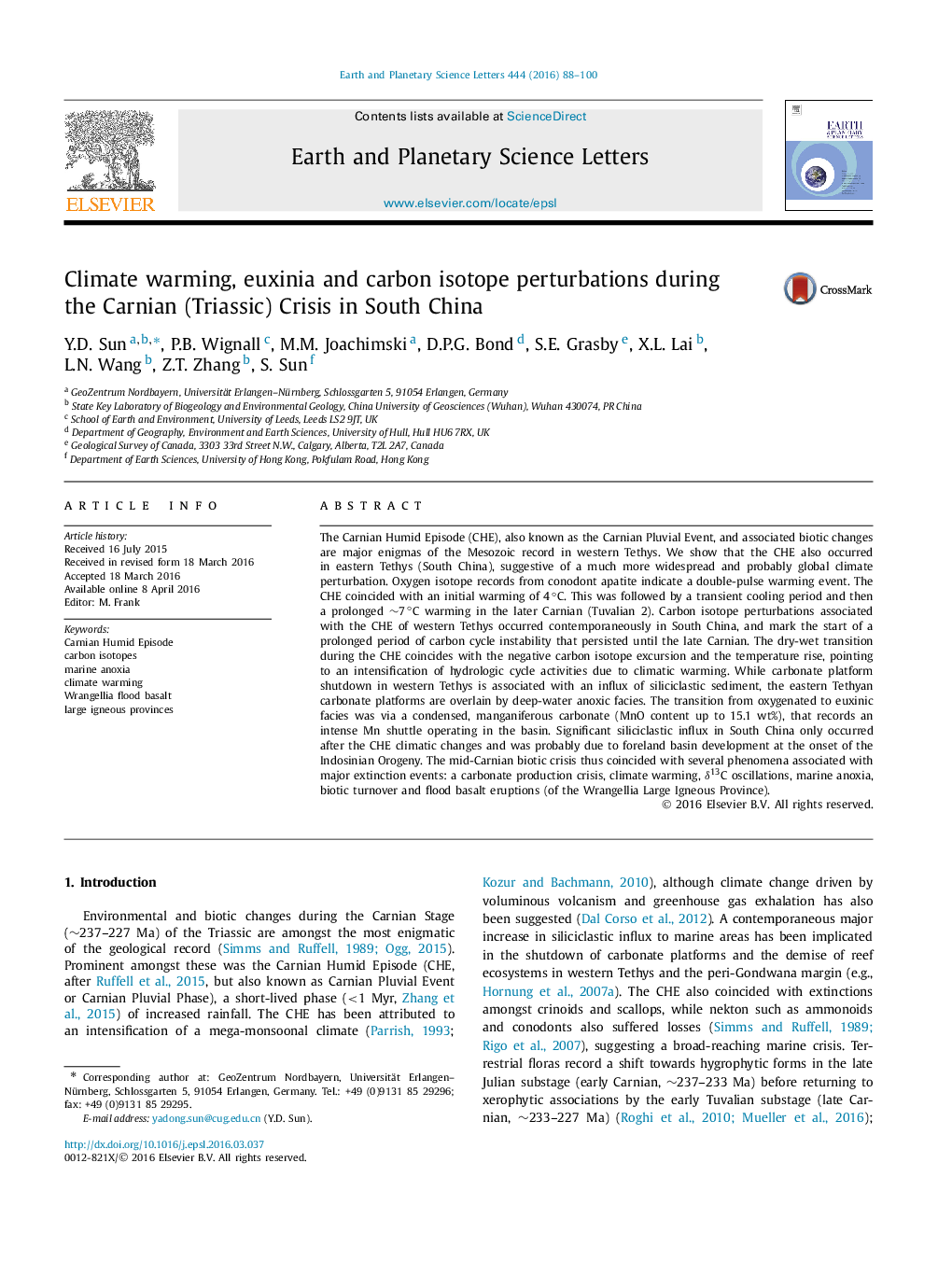| کد مقاله | کد نشریه | سال انتشار | مقاله انگلیسی | نسخه تمام متن |
|---|---|---|---|---|
| 6427490 | 1634712 | 2016 | 13 صفحه PDF | دانلود رایگان |
- Carnian Pluvial Event manifested in South China, confirming a true global change.
- The Carnian environmental perturbations were much longer than previously known.
- Warming, δ13C oscillations, and intense euxinia are seen in the eastern Tethys.
- Carbonate production crisis in South China predates Indosinian Orogeny activities.
The Carnian Humid Episode (CHE), also known as the Carnian Pluvial Event, and associated biotic changes are major enigmas of the Mesozoic record in western Tethys. We show that the CHE also occurred in eastern Tethys (South China), suggestive of a much more widespread and probably global climate perturbation. Oxygen isotope records from conodont apatite indicate a double-pulse warming event. The CHE coincided with an initial warming of 4â°C. This was followed by a transient cooling period and then a prolonged â¼7â°C warming in the later Carnian (Tuvalian 2). Carbon isotope perturbations associated with the CHE of western Tethys occurred contemporaneously in South China, and mark the start of a prolonged period of carbon cycle instability that persisted until the late Carnian. The dry-wet transition during the CHE coincides with the negative carbon isotope excursion and the temperature rise, pointing to an intensification of hydrologic cycle activities due to climatic warming. While carbonate platform shutdown in western Tethys is associated with an influx of siliciclastic sediment, the eastern Tethyan carbonate platforms are overlain by deep-water anoxic facies. The transition from oxygenated to euxinic facies was via a condensed, manganiferous carbonate (MnO content up to 15.1 wt%), that records an intense Mn shuttle operating in the basin. Significant siliciclastic influx in South China only occurred after the CHE climatic changes and was probably due to foreland basin development at the onset of the Indosinian Orogeny. The mid-Carnian biotic crisis thus coincided with several phenomena associated with major extinction events: a carbonate production crisis, climate warming, δ13C oscillations, marine anoxia, biotic turnover and flood basalt eruptions (of the Wrangellia Large Igneous Province).
Journal: Earth and Planetary Science Letters - Volume 444, 15 June 2016, Pages 88-100
